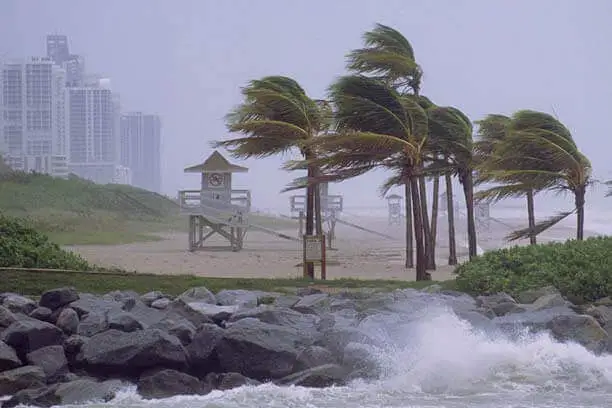Planning Summer Travel? 5 Natural Disasters You Should Prepare For


There’s no telling when a natural disaster will occur. But summer can be especially fraught, with very wet or very dry weather conditions making way for all sorts of issues — and that goes for your favorite travel destination. That means preparing yourself with hurricane travel tips, or knowing wildfire safety travel strategies, is important before you head out on your summer vacation.
So, in addition to preparing your home before vacation and packing all the essentials you’ll need while traveling, make sure you take these summer natural disasters — and summer travel safety tips — into consideration.
Midwesterners are familiar with tornadoes, especially out in rural areas. But did you know that these twisted forces of nature can also occur in highly populated cities? Tornadoes, which look like funnels, can devastate a neighborhood in seconds with winds over 200 miles per hour, and without much warning. Tornado season is May through July, and they most commonly strike between 4 and 9 p.m.
Be prepared: Know the warning signs of a tornado which according to the Federal Emergency Management Agency (FEMA) include rotating funnel-like clouds, an approaching cloud of debris or a loud roar that sounds like a freight train. Make sure your hotel has a safe room, which is typically in a basement or interior room on the first floor.
Wildfires are most common in the western states, but their range can stretch as far east as Texas, Colorado and Wyoming. A growing number of American homes are vulnerable to wildfire, which can affect anyone living near forested areas — check out your risk at WildfireRisk.org. Even buildings not immediately next to vegetation risk wildfire damage, because embers can be transported by wind and ignite homes a mile or more away from the flame front. And air quality can be a serious problem, as FEMA notes.
Be prepared: Staying with friends or family? Talk to them about their evacuation plan. Also, use tools that show wildfires and their containment prior to any road trip. The best wildfire preparation involves planning.
Desert states aren’t always so dry. They are, in fact, particularly vulnerable to flash flooding, though floods occur in all 50 states. For instance, in Arizona, monsoon flooding occurs surprisingly often and can be deadly.
Flooding is detrimental to both homeowners and drivers — many of which (especially out-of-towners) are unaware of the dangers and severity of floodwaters. According to the National Weather Service, a flood six inches deep will reach the bottom of most cars, which can cause the driver to lose control, and one foot of water could potentially sweep those cars away.
Be prepared: Avoid this summer natural disaster by learning the difference between a flood watch and a flood warning, and pay attention to the weather reports to avoid driving during summer monsoons.
Hurricane season in the U.S. is active along the Atlantic Coast and Gulf of Mexico from June through November. While these storms make their biggest impact on coastal destinations, the wind and water damage caused by hurricanes and tropical storms can reach far inland and last for days after the storm, bringing with them floods and power outages. Some hurricanes build over several days, so vacationers will know when a major storm is projected to affect their destination. Other hurricanes form quickly and do not offer much warning, making them a critical summer natural disaster to prepare for.
Be prepared: If you’re planning to travel to a destination that experiences hurricanes during the season, plan ahead. Keep an eye on hurricane forecasts and change plans if needed — better to incur an expense than to be unsafe. If you’re already at your destination when a hurricane approaches, follow all evacuation notices and review these severe weather alerts to be informed.
Extreme heat can be tough to deal with, but it’s especially concerning since it can cause power outages. That’s not all: Summer temperatures in the Northeast are expected to increase by as much as 10 degrees in the next 60 years. The frequency and length of these heat waves are also expected to intensify, especially in urban areas, thanks to dense populations and more human activity. That means you might encounter unexpected extreme heat even in places that tend to be cool — and you’ll want to be prepared.
Be prepared: Extreme heat can cause power outages. This checklist offers safety tips on how to prepare for an outage and what to do during and after. Be sure to protect your car in the summer heat as well.
Are you prepared for severe weather conditions this summer, at home and during your summer travels? Reach out to Farm Bureau to make sure you have the right coverage.